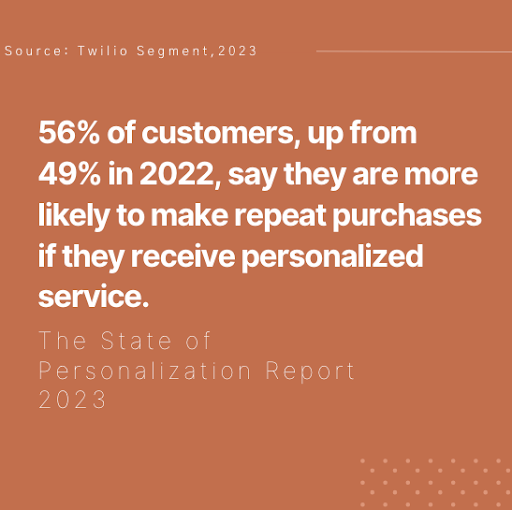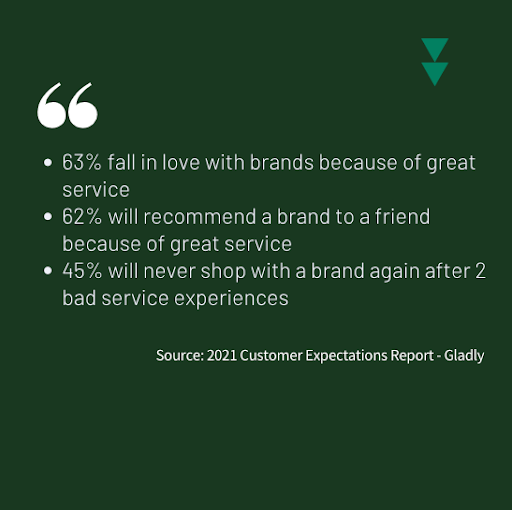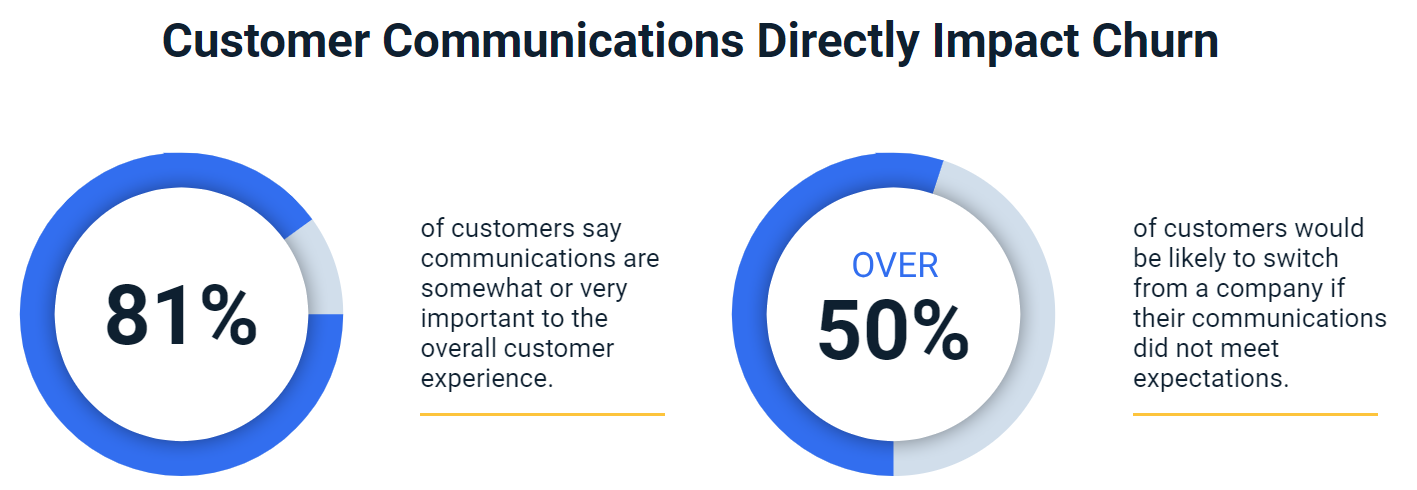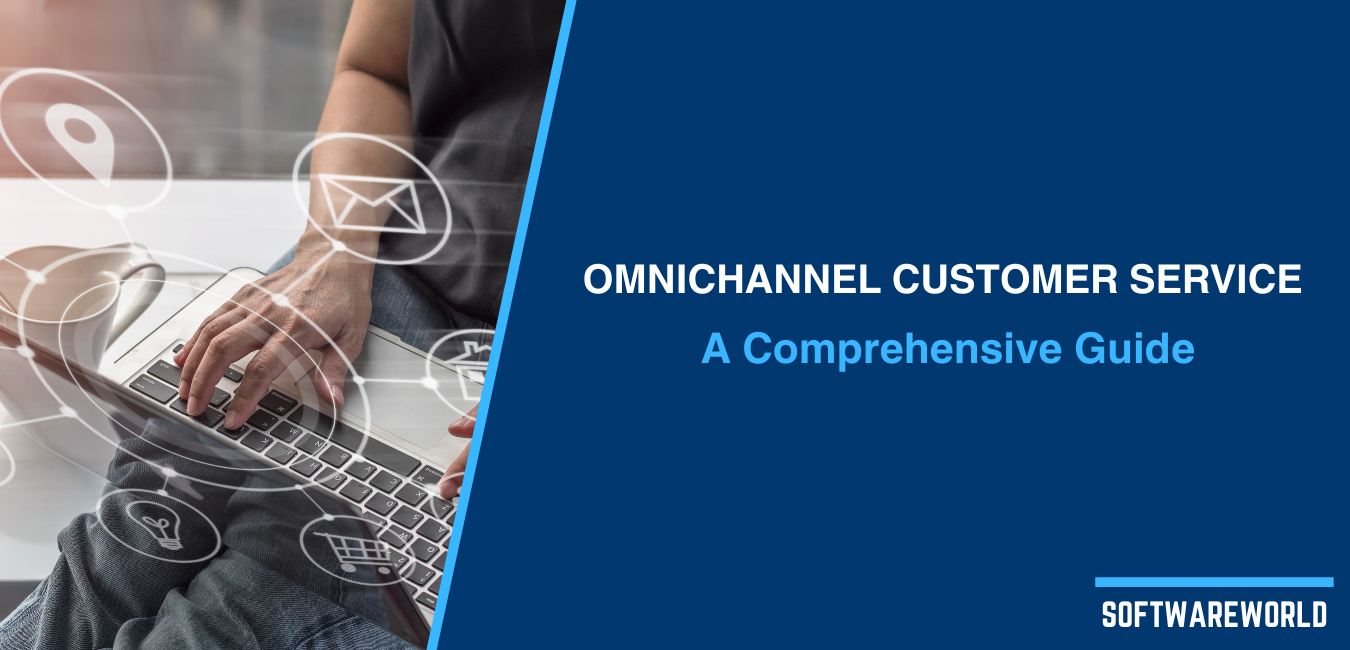Table of Contents
Would you like to get your consumers more engaged and provide them with the support they need? Then, you need an omnichannel customer service strategy.With this strategy, your customers can easily communicate with your sales and support staff through their preferred channels. This is crucial since modern consumers expect more value and consistency when interacting with their favorite brands.Consumers now demand fast, free-flowing support across different channels (such as by phone, email, live chat, and even text messaging).If your customer service department cannot provide all of these, then you need to act fast! To help you get started, we’ll be breaking down the concept of omnichannel customer service. We’ll discuss its importance and provide several key tips for creating a robust omnichannel strategy.
» What Is Omnichannel Customer Service?

Image sourced from smartcommunications.com
It refers to the practice of offering ongoing support to customers across several touchpoints and channels. This sets it apart from more conventional forms of customer service, where separate teams focus on a single communication channel, like a call center solution.The purpose of omnichannel support is to create a unified customer service model where all available channels of contact are connected and operate in unison.Support requests from different channels flow into a central system, which provides context for your customer service team. This means your support agents always have access to information from past interactions to provide timely support to your customers.Take the case of a client who is experiencing trouble with a purchase from an online clothing store.-
- The client initially reaches out to the business via Instagram.
- The clothing store immediately contacts the customer by phone to get further information before providing assistance.
- The customer gets a text with a link to submit a return request form.
- The link leads to a live chat page where the customer can upload pictures of the defective item and describe the reason for the return.
- Agents refer back to previous conversations across all platforms without asking the customer to explain the problem all over again.
- The quick and effective resolution leaves a good impression on the mind of the customer, and they want to buy from the same store in the future.
» Omnichannel vs Multichannel: What Is the Difference?
The key difference is that with omnichannel, the customer experience is consistent, regardless of the customer’s first point of contact.Simply put, multichannel customer service is the practice of assisting customers through more than one contact method. For instance, you might provide assistance via an 8x8 contact center or social media in addition to email. However, each channel stands on its own. When the conversation moves to another channel, the interaction has to start again from scratch.Meanwhile, with the omnichannel approach, consumers can move to a different channel in the middle of a conversation. Information from previous interactions is passed on to the new channel to ensure a seamless customer service experience.The customer service experiences offered by multichannel and omnichannel strategies are naturally distinct from one another.To put it another way, multichannel is less concerned with providing a satisfying experience for the consumer than it is with establishing a positive conversation with them. Instead of focusing just on the quality of the initial point of contact, omnichannel services aim for consistency across all touchpoints.» What Are the Benefits of Omnichannel Customer Service?
1. Personalized Experiences
56% of customers, up from 49% in 2022, say they are more likely to make repeat purchases if they receive personalized service.
Image created on Canva (Data Source)
Regardless of the customer’s status, they will feel appreciated and emotionally connected to your brand when you use personalization.With customer service in particular, omnichannel communication simplifies the process of developing long-lasting client relationships and increasing their loyalty through personalization.It allows users to communicate with support agents via their desired channel.As customers have come to expect interacting with the same customer support agent across all contact channels, this can significantly improve their experience.In addition, agents can access crucial data such as past interactions, order history, account information, and others from any channel. This allows them to offer personalized guidance based on the customer’s preferences as well as any notes made by other agents.2. Cost Savings and Increased ROI
Adopting an omnichannel strategy maximizes the efficiency of your support team along with your return on investment (ROI).By centralizing all relevant channels and data, the appropriate omnichannel strategy will improve inbound call handling and boost agent productivity. There will be no more frantic switching between windows and apps to track information.Using AI and automation, you can also maximize effectiveness even further and save more by having bots respond automatically to common questions.3. Quick Communication and Issue Resolution
It’s easy to see why responding to issues and providing timely solutions are crucial aspects of good customer service and a positive support experience. No one likes being kept waiting, especially when their issue is time-sensitive.Furthermore, regardless of the channel used to contact support staff, clients demand an immediate answer to their inquiries.Agents can provide timely support when they have the right information readily available. This also means that even if they have to escalate the issue, the customer always has an idea of what’s being done about it.4. Enhance Customer Satisfaction
In general, customer retention and customer satisfaction are higher at businesses that have invested in providing excellent customer service than at those that haven't.63% of customers say their loyalty to a company is based on the quality of the service they receive, not the product itself.
Image created on Canva (Data Source)
When you provide a simplified customer service journey across multiple touchpoints, you’ll likely increase customer satisfaction.» What Elements Make up an Omnichannel Approach to Customer Service?
For an omnichannel solution to work, you do not have to use every physical and digital channel that is out there. You should instead do research to find out which channels your audience likes the most.Examples include:-
- Physical retail stores: Storefront retail establishments are the first point of contact between manufacturers and final consumers for many products. Many buyers still like to browse items in person, making physical storefronts significant despite today's increasingly digital economy.
- E-Commerce stores: The introduction of online shopping was the first disruptive force in the traditional retail industry. Make it more efficient by integrating it with other methods of contact; for instance, include a live chat feature that customers can access from the website itself.
- Mobile communication: Services for mobile devices have adapted to meet the needs of customers who expect ongoing communication through different channels. These channels include voice, text, social media, and instant messaging.
- Email communication: Communicating via email is an affordable alternative to phone support in terms of both cost and time spent tracking and analyzing customer interactions.
- Social media: Twitter, Facebook, and Instagram are effective social media channels for providing quick responses to customer inquiries.

Image sourced from smartcommunications.com
» How To Implement Omnichannel Customer Service
The way you set up your omnichannel customer service strategy will depend on your company and the preferences of the people you want to serve.But the best practices below are tips that will help anyone who starts using omnichannel communication.1. Focus on the customer journey
The customer’s journey doesn’t end when they buy something. To build brand loyalty, your customer service strategy should cover the whole customer lifecycle, including post-purchase customer support. Here are a few ways to do that:-
- Improve your company's communication tools and CRM solutions so that your customer service team always has a full picture of the customer's interaction history.
- Adjust your operations to help customers reach live agents easily and get their issues resolved faster.
- You can strengthen your relationship with customers by giving them savings opportunities.
2. Know what your customers want
Not all channels need to be part of your omnichannel strategy. The most important step in developing an omnichannel solution is understanding your target audience's preferred channels of communication.You should be strategic rather than attempting to create an all-encompassing omnichannel approach. Identify the communication methods your consumers like and prioritize those in your strategy. It's better to provide excellent service through a handful of channels than offer mediocre service through many.3. Provide options for self-service
Self-service allows customers to receive solutions quickly, reduces the need for follow-up with agents, and frees up agents' time to serve customers with more difficult issues. It’s also increasingly popular with younger generations. According to Shep Hyken, 48% of Gen Z participants and 46% of Millennials prefer a digital self-service option rather than calling a live customer service agent.With omnichannel self-service, users can assist themselves regardless of the channel they prefer. These users can transfer between channels without having to start over and can just continue where they left off.Customers can also get access to chatbots on the business website in addition to knowledge bases. These chatbots can provide immediate support and answer inquiries. They can analyze customer information, direct customers to the right support materials (or a human agent, if necessary), and collect feedback to improve self-service.Interactive Voice Response (IVR) is another essential component of self-service for customers.Customers can get help over the phone or complete tasks like making payments by dialing in their answers or speaking into the phone.4. Allow experiences to flow fluidly between channels
There are so many great ways to interact with customers. You should make sure that each one provides consistency –- a bit similar to how AI-powered businesses buy ai domain names to show uniformity in their branding. This often means predicting consumer needs to determine what they will likely need from each interaction. A distorted transfer of channels can frustrate customers and lead to dead ends. Make sure the next step in the interaction is a logical one. For example, for a customer who is interacting with a chatbot, transferring to a live agent is the next logical step in their journey. Integrating both of these options will allow the customer to transfer directly to a human agent from the live chat environment, improving the overall experience.Also consider:-
- Getting back to customers faster through SMS, chat, mobile apps, email, messaging, and web chat
- Creating engagement workflows that work across channels to provide flexibility and help your business and its customers succeed.



